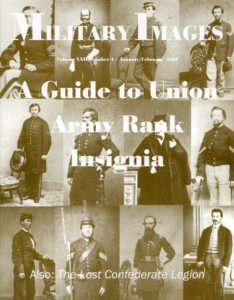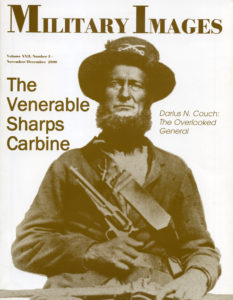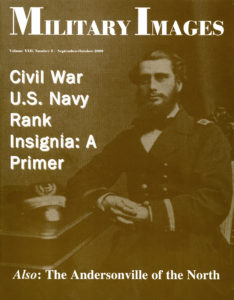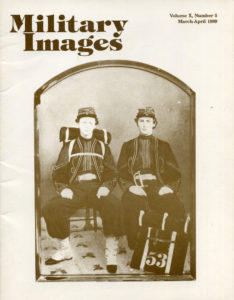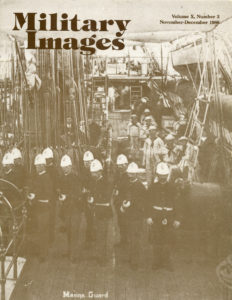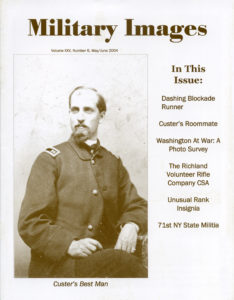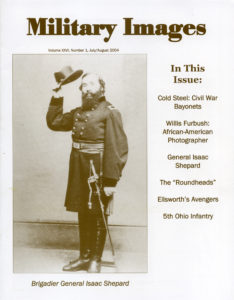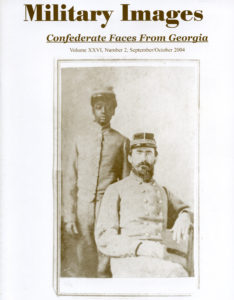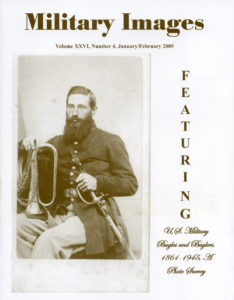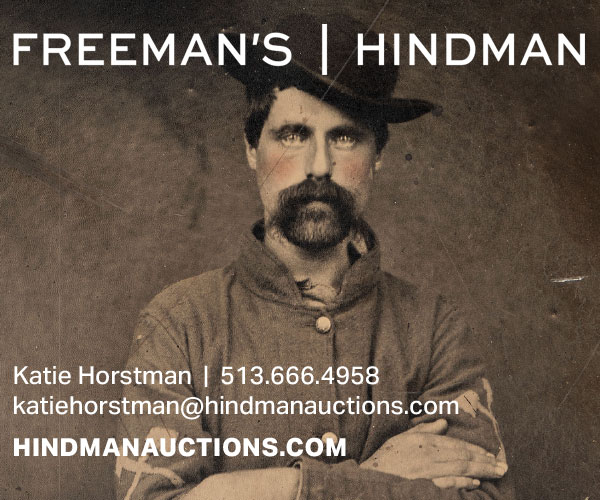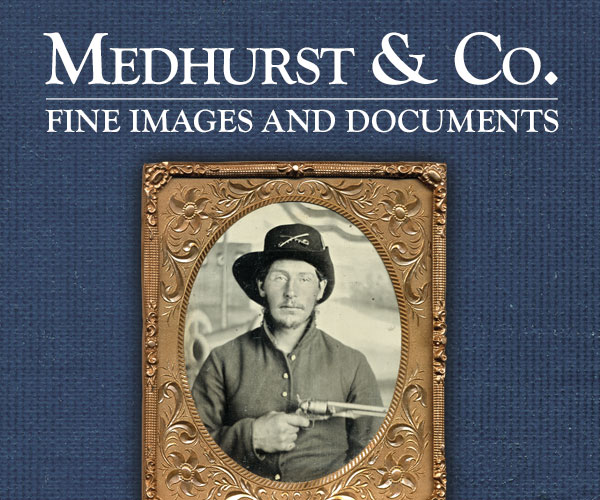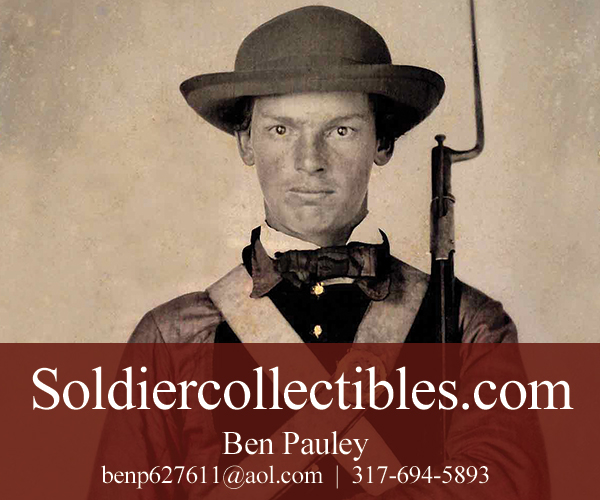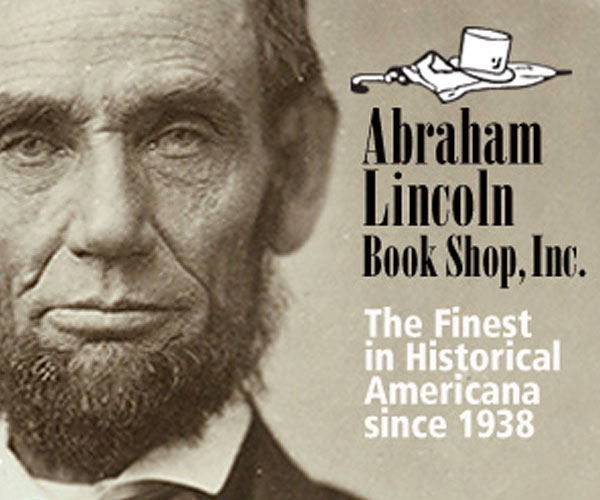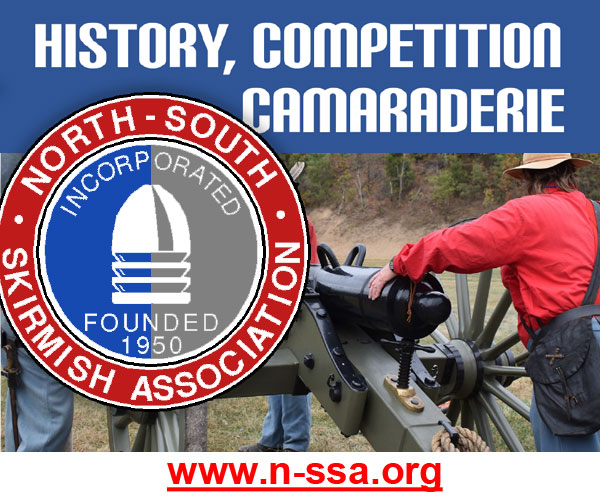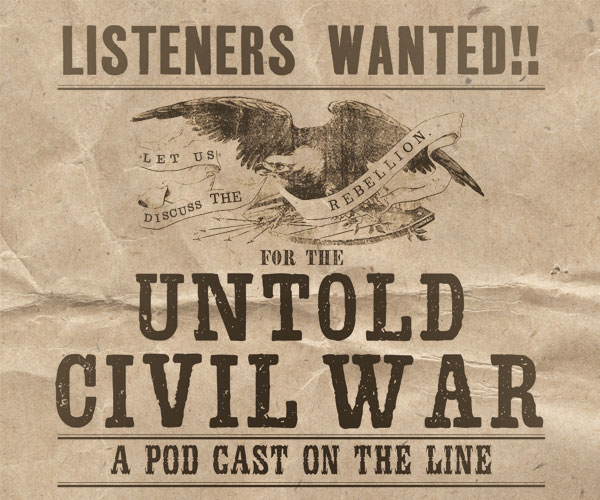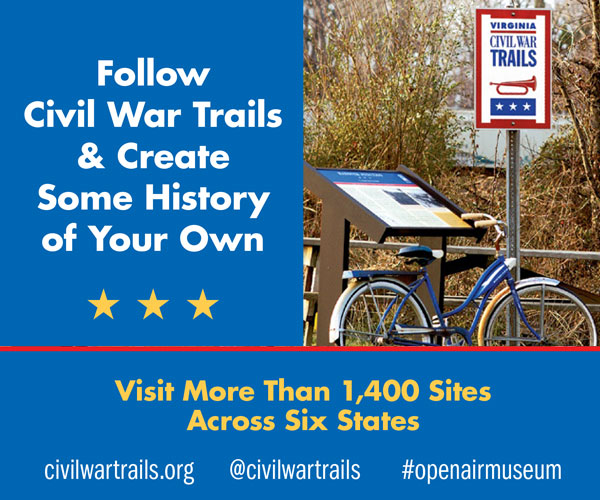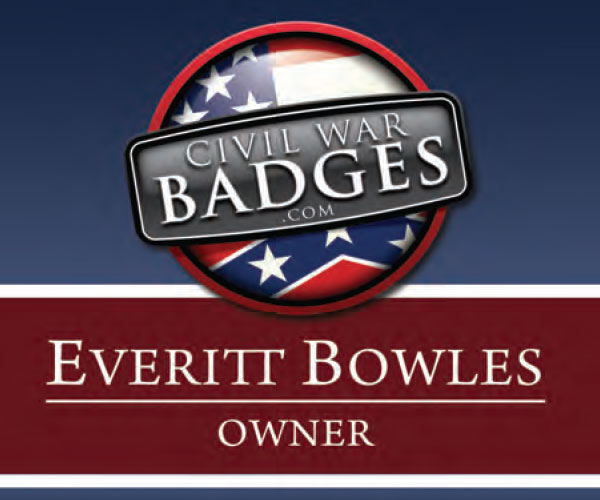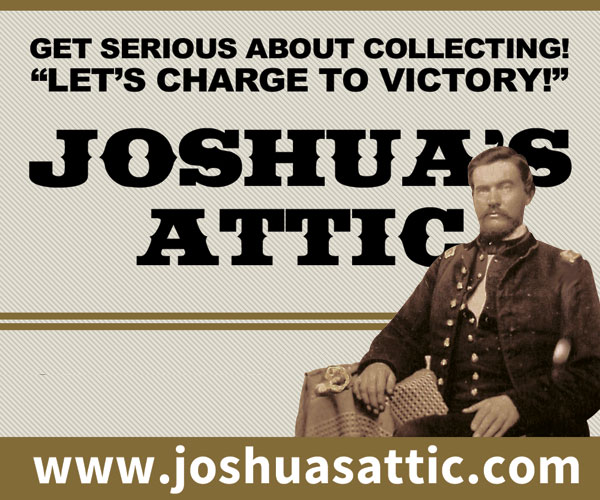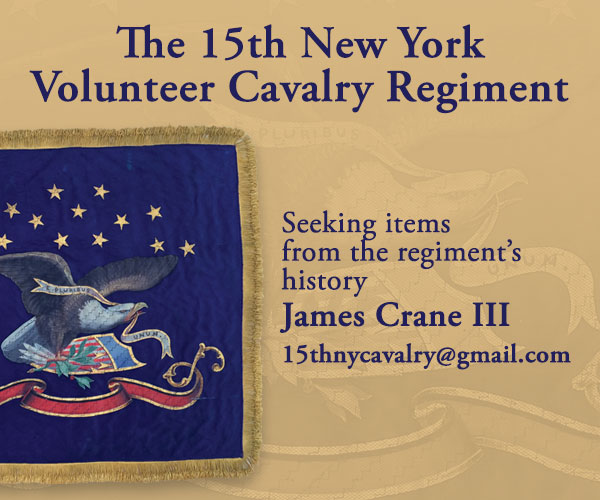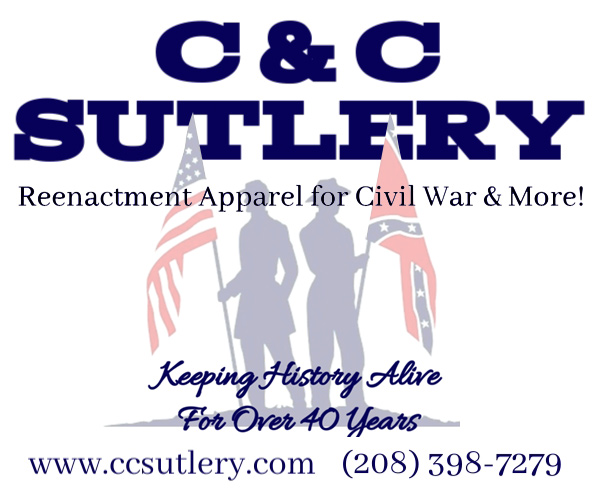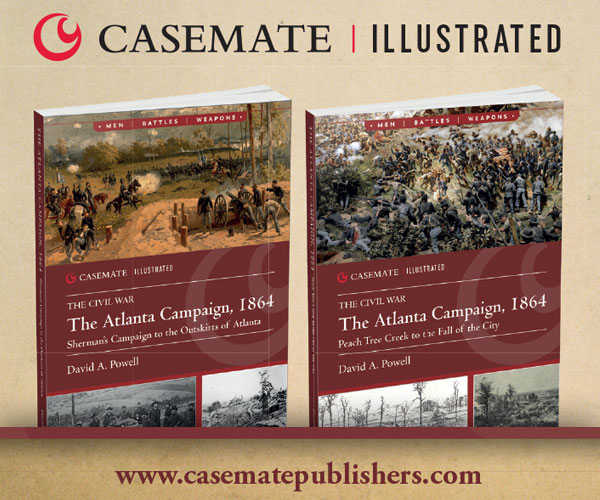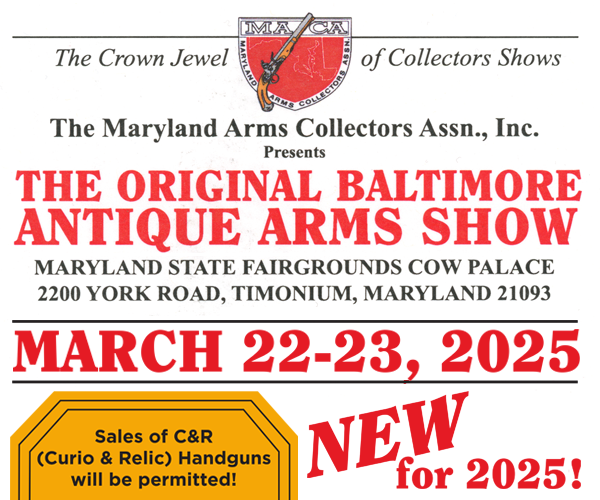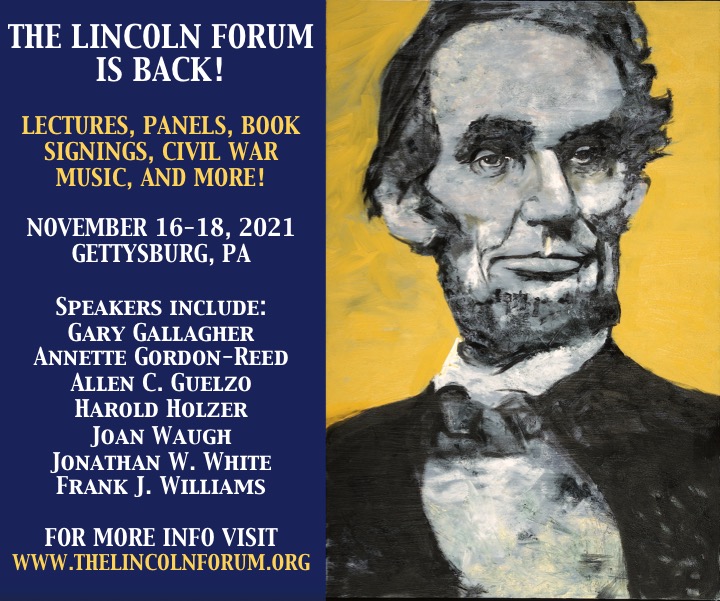The complete issue
Vol. XXII, No. 4
(40 pages)
Print edition: Visit our store to check availability
Digital edition: Visit JSTOR.org to purchase
Subscribe to MI
Explore the MI Archives: Browse | Advanced search | Tutorial
Inside
Cover image
A composite of portraits of soldiers shows the wide variety of insignia worn by officers and non-commissioned officers.
Table of Contents (p. 1)
Mail Call (pp. 2-3)
Feedback includes a request about how to obtain better views of images that appear in the magazine, and notes about the mystery of the Alabama image reported in the last issue.
Passing in Review (pp. 4-5)
Two publications are reviewed, including Mountain Partisans: Guerrilla Warfare in the Southern Appalachians, 1861-1865 (Praeger Publishers) by Sean Michael O’Brien and Long Remember (Forge) by MacKinlay Kantor.
The Auction Block (pp. 6-8)
A sampling of sales from the popular auction site eBay is included.
Union Army Rank Insignia: An Introduction by Mike Fitzpatrick (p. 9)
The author kicks off this comprehensive review of insignia by noting, “You can’t tell a player without a scorecard, nor an officer without knowing what his rank badges mean. Here’s a guide to rank and grade badges of the Union army.”
The Major General (p. 10)
Portraits include Nathaniel P. Banks and Daniel Sickles.
The Brigadier General (p. 11)
Portraits include Ambrose E. Burnside, Joseph Hooker and James Ricketts.
The Colonel (p. 12)
Portraits include George Lincoln Prescott of the 32nd Massachusetts Infantry and Robert Galbraith of the 5th Tennessee Cavalry.
The Lieutenant Colonel/Major (p. 13)
Portraits include Maj. (Surgeon) Albert H. Blanchard of the 3rd Massachusetts Cavalry.
The Captain (p. 14)
Portraits include George R. Bell of the 37th Illinois Infantry and staff officer G.J. Gland.
The First Lieutenant (p. 15)
Portraits include William Stauffer of the 195th Pennsylvania Infantry and Austin Rawlings of the 1st Missouri Cavalry.
The Second Lieutenant and The Veteran Reserve Corps (p. 16)
Portraits include Stephan Cannon of the 22nd Michigan Infantry.
Light Artillery Officers and The Medical Cadet (p. 17)
Portraits include Hiram D. Smith of the 17th New York Light Artillery and an 1863 group portrait of four members of the 27th New York Light Artillery at Camp Berry in Washington, D.C.: Charlie, Tom, Capt. Eaton and Lieut. Moore.
Officers’ Overcoat Insignia (p. 18)
Portraits include two unidentified soldiers.
The Sergeant Major and The Pioneer (p. 19)
Portraits include George Cole of the 2nd Massachusetts Heavy Artillery.
The Quartermaster Sergeant and The Signal Corps (p. 20)
Portraits include two unidentified quartermaster sergeants and a Signal Corps private.
The Hospital Steward (p. 21)
Portraits include Samuel Nims of the 1st New Hampshire Heavy Artillery.
Non-Regulation Staff NCO Insignia and The Ordnance Sergeant (p. 22)
Portraits include a corporal in the 7th New Hampshire Infantry.
The Battalion/Company Quartermaster Sergeant and Enlisted Men’s Overcoat Insignia (p. 23)
Portraits include Company Quartermaster Sergeant Richard Thomas of the 6th U.S. Infantry.
The First Sergeant (p. 24)
Portraits include Samuel Ilgenfritz of the 187th Pennsylvania Infantry and James A. Monroe of the 77th New York Infantry.
The Sergeant (p. 25)
Portraits include David Gowen of the 7th California Infantry, State Militia.
The Corporal (p. 26)
Portraits include for unidentified soldiers who wear this rank.
Uniforms & History by Michael J. McAfee (pp. 27-28)
In “Color Sergeants: A Breed Apart,” McAfee begins by asking readers if they are familiar with the monument to the 143rd New York Infantry at Gettysburg. He explains that the statue depicts an event that occurred during the battle and provides details about the regiment and the chevrons worn by the sergeants who carried the colors into action. Six cartes de visite illustrate the text, including two color bearers from the 143rd with their flags, N.T. Skinner of the 7th Vermont Infantry, a color sergeant in the 6th Connecticut Infantry, Henry Badger of the 6th New Hampshire Infantry, a color bearer who may have served in the 15th Connecticut Infantry and Joseph Hastings of the 118th New York Infantry.
The Sailor Who Would Be a Marine by David M. Sullivan (p. 29)
For a time it appeared that navy Capt. Samuel Powhatan Carter might become the Commandant of the Marine Corps. The author explains how Carter, who was confined to ground service during the Civil War, became a prime candidate in the early 1870s. Ultimately, President Ulysses S. Grant chose another man to lead the Marines.
The Lost Confederate Legion: Phillips Legion Infantry at Fox’s Gap by Kurt D. Graham (pp. 30-34)
Phillips’ Georgia Legion Infantry is not recorded as having fought at South Mountain or Antietam in the autumn of 1862, but detective work by the author proves that they did. Graham continues to explain how he learned about one of its members, Alfred G. Arwood, who according to descendants was said to have fallen in battle during Lee’s first invasion of the North. What follows is an accounting of the trail Graham followed to tell Arwood’s story. Illustrations include portraits of several members of the Legion, including 2nd Lt. J. Fletcher Lowrey, Pvt. Joseph Tarpley Lowrey, Pvt. Joseph Pleasant Bryan, Pvt. Jesse M. Pendley, Pvt. Robert Pinkney Burnett and Chaplain George Gilman Smith.
Stragglers (pp. 35-37)
Portraits include Lt. Col. E.S. Drew, surgeon of Louisiana’s Washington Artillery, 1st Lt. Arthur White of the Union Light Guard independent company of Ohio cavalry and Pvt. John S. Goshorn of the 65th Ohio Infantry.
Sutler’s Row (pp. 38-39)
The Last Shot (p. 40)
Two smiling Doughboys have their arms around a third figure in the center that appears to be an anatomical skeleton dressed as a soldier. The image is a real photo postcard from the collection of Robert L. Kotchian.
